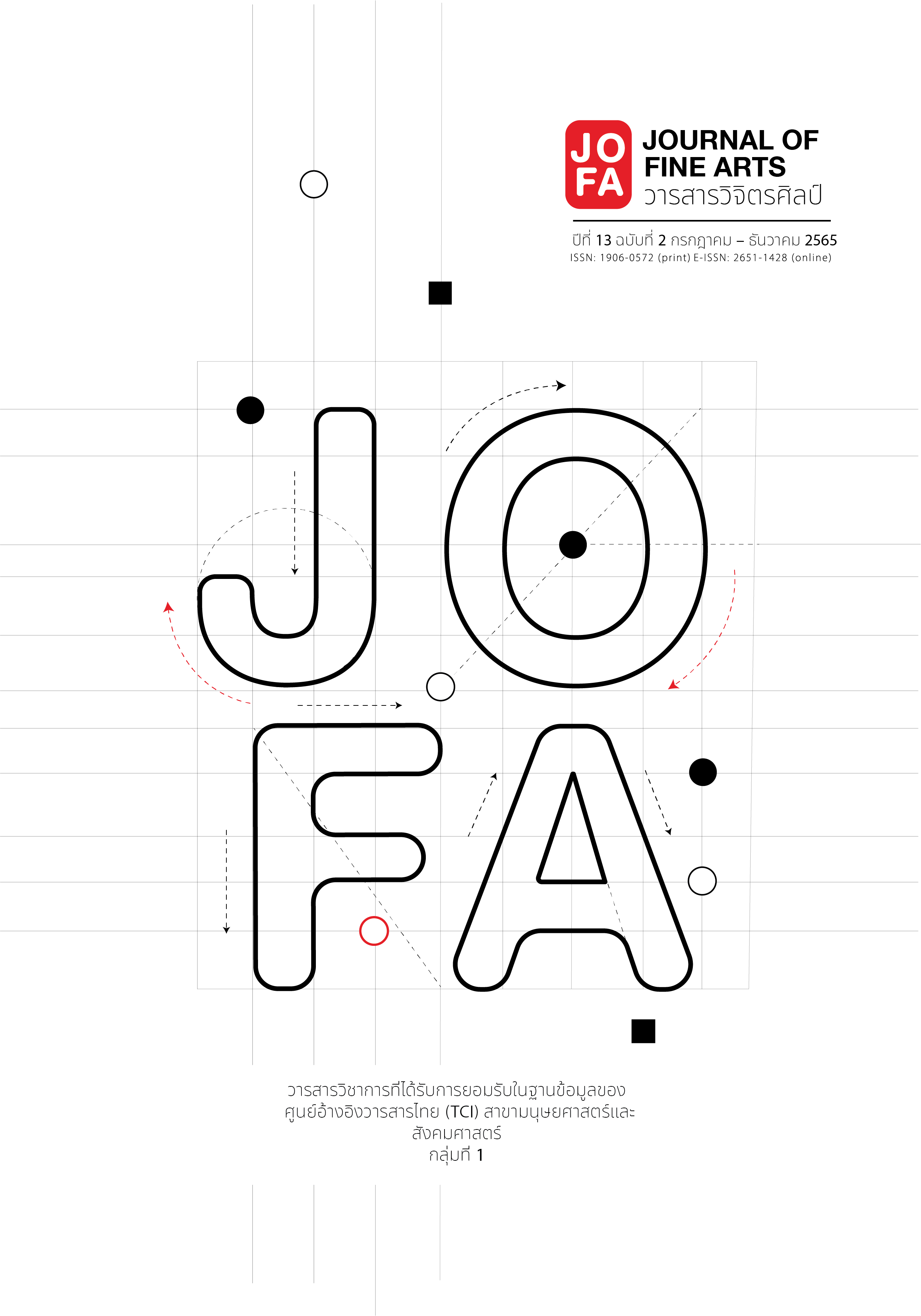The Development of Clothes for Maternal Patients
Main Article Content
Abstract
The objective of this research is to develop Delivery Gowns in Thammasat University Hospital that meet patients’ desire and create patients’ satisfaction especially in terms of comfort and easiness for breastfeeding. This research work uses Mixed Research Methodology, including both the quantitative research and the qualitative research methodologies. The group of 82 maternal patients are selected from Obstetrics and Gynecology Department of Thammasat University Hospital with purposive sampling technique. The data collection tools for this research are a questionnaire on problem concerning the gowns that patients encounter, and a questionnaire on satisfaction with the designed gowns in several aspects. Data from the samples who have tried on the designed gown are collected and analyzed. The findings from the research have shown that design B (x̄ = 4.25) is the most satisfying of all because it is a kimono robe with string at the waistline that is easy to wear and comfortable for breastfeeding. The following designs are design C (x̄ = 3.97) which is a long tonic with round neck, opening from the shoulder and string, and design A which is like a nurse gown with separate two pieces, consisting of a kimono top and a wrap around skirt (x̄ = 3.90). All the three designs have the breastfeeding function which can be opened wide to easily breastfeed. This benefit from this research is the new design maternity gown to be used in Obstetrics and Gynecology Department of Thammasat University Hospital.
Article Details

This work is licensed under a Creative Commons Attribution-NonCommercial-NoDerivatives 4.0 International License.
References
Angkhasuwaphla, N. “Kānlīang Lūk Yāng Chān Chalāt. [Smart breastfeeding smart citizens].” The 4th National Breastfeeding Conference. Miracle Grand Convention Hotel, June 5, 2013.
Baby gooroo. “Breastfeeding positions and latch.” (picture). Accessed November 29, 2018. https://babygooroo.com/articles/breastfeeding-positions-latch.
Chaowadi, J. “Sinlapa Kap Sư̄aphā Læ Kān Tǣngkāi. [Art and Clothing].” human CMU. Accessed March 8, 2019. http://www.human.cmu.ac.th/home/hc/ebook/006103/lesson8/05.htm.
Chawanpaiboon, S. and Chawanpaiboon, W. Sīsip Sapdā Phattha nākhankhunnaphāp. [40 weeks develop a quality pregnancy]. 11st ed. Bangkok: Plan publishing, 2003.
Faul, F., Erdfelder, E., Lang, A.-G., and Buchner, A. “G*Power 3: A flexible statistical power analysis program for the social, behavioral, and biomedical sciences”. Behavior Research Methods 39, no. 2 (May 2007) :175-191. Accessed March 8, 2019. https://link.springer.com/article/10.3758/BF03193146.
Godfrey, J.R. and Lawrence, R.A. "Toward optimal health: The maternal benefits of breastfeeding." Journal of Women’s Health 19, no. 19 (September 2010): 1597 - 1602. Accessed March 8, 2019. https://www.liebertpub.com/doi/10.1089/jwh.2010.2290.
Intharaphasuead, S. Khūmư̄ Tang Khan Lǣ Trīam Khlō̜t. [Pregnancy and Birthing Guide]. Nonthaburi: Rakluke Family Group Company Limited, 2004: 302 - 304.
Phonasa, S. Kānčhatkān Sinkhā Sư̄aphā. [Apparel Merchandising Management]. Bangkok: Saitan, 2003: 196 -199.
Sawasdivorn, S. “Sathānakān Kānlīang Lūk Dūai Nom Mǣ Nai Prathēt Thai. [Breastfeeding Situation in Thailand].” The 4th National Breastfeeding Conference, Miracle Grand Convention Hotel, June 6, 2013.
Sinsuksai, N. “Nayōbāi Sathānakān Læ Nǣonōm Khō̜ng Kānlīang Lūk Dūai Nom Mǣ”. [Breastfeeding Policies, Situations and Trends]. 3rd ed., In Breastfeeding, edited by Wijitsukhon, K., Sǣngphœ̄m, P., Watthāyu, N., Rư̄angčhiratsathīan, S. and Phayakkharư̄ang, S. Bangkok: Preone, 2012: 21 – 31.
World Health Organization. “World Breastfeeding Week Breast Feeding Counselling.” World Health Organization. Accessed September 20, 2019. http://who.int/mediacentre/events/annual/word_breastfeeding_week/en.


